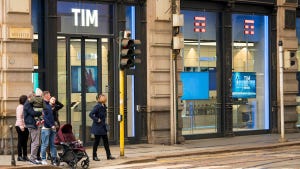
LONDON -- 5G World Summit 2018 -- BT plans to switch off its UK 3G network by 2022, relying on a mixture of 2G, 4G and 5G technologies to serve mobile customers, and continues to work toward a 2025 target for the shutdown of its public switched telephony network (PSTN).
The 3G target, included in a presentation at today's 5G World Summit in London, forms a part of the operator's broader transformation efforts as it prepares for the launch of next-generation 5G technology in 2019 and works on converging its fixed and mobile networks. (See BT Revamps Consumer Offers, Adds Amazon to TV and BT Kicks Off 5G Campaign With Plans for 2019 Launch.)
Howard Watson, BT Group plc (NYSE: BT; London: BTA)'s chief technology and information officer, said the UK operator, which entered the mobile market with its £12.5 billion ($16.7 billion) takeover of EE in 2016, has already begun reallocating spectrum awarded for use with 3G services.
"We've already started the journey of refarming the 3G network and getting better carrier aggregation for 4G," he told event attendees during a morning keynote presentation. "We see 2G and 4G coexisting and lessening the need for 3G, although there are still people with 3G on their devices."
Thanks to its takeover of EE, BT owns about 40MHz of 3G spectrum in the 2.1GHz band. The frequencies were licensed for multi-billion-dollar sums at the turn of the century, as operators prepared to launch 3G services. (See UK's £1.4B '5G' auction looks bad for industry.)
Despite the spectrum payments that mobile service providers made, the technology has been a huge disappointment and become increasingly irrelevant with the rollout of 4G.
Speaking at 5G World Summit earlier this week, Adrian Scrase, the chief technology officer of standards body ETSI, said there was broad industry feeling that 3G had underachieved while 4G had overachieved.
BT's 4G network is now available to about 90% of the UK population, said Watson, and the aim is to boost coverage to about 95% by 2020.
With carrier aggregation, BT would be able to use 2.1GHz spectrum in conjunction with 4G bands, such as the 800MHz, 1800MHz and 2.6GHz ranges, to provide higher-speed connections for customers.
That could help to address some of the capacity constraints on 4G networks in the busiest areas. BT and other European operators are also looking for a capacity boost with the launch of 5G services in 2019 or 2020.
Want to know more about 5G? Check out our dedicated 5G content channel here on
Light Reading.
Besides upgrading its mobile infrastructure, BT is making improvements to its fixed-line systems and network of WiFi hotspots to meet customer needs.
"We're planning to launch devices that combine mobile and fixed and give the best of both, and as part of that we'll be upgrading the WiFi estate so that we can supplement 4G and 5G coverage with a great public WiFi network," said Watson. "The challenge with convergence is to make it straightforward and easy for customers, so they don't have to think about it."
BT now faces exponential growth in data consumption, with the average smartphone customer now gobbling up around 1.9 gigabytes every month, according to Watson.
On the network transformation front, BT has long struggled with a shutdown of its old-fashioned PSTN network as it moves customers onto newer Internet Protocol (IP) technologies.
The latest target is for a PSTN shutdown by 2025, by which stage it will be around 30 years old. "There are 16 million lines on the PSTN and Openreach [BT's infrastructure business] has started a consultation with the industry and is considering a date of 2025 [for shutdown]," said Watson. "It needs replacement."
BT is not the only European operator that has found PSTN shutdown much harder than it had originally expected. Deutsche Telekom AG (NYSE: DT), a stakeholder in BT, recently said it would miss a 2018 target for all-IP transformation and is now aiming to complete that transition by 2020.
The lag is partly responsible for the German operator's failure to achieve cost-saving objectives unveiled at a capital markets day in 2015. (See DT's Epic Undershoot Reflects Transformation Woes.)
— Iain Morris, International Editor, Light Reading
Read more about:
EuropeAbout the Author(s)
You May Also Like












